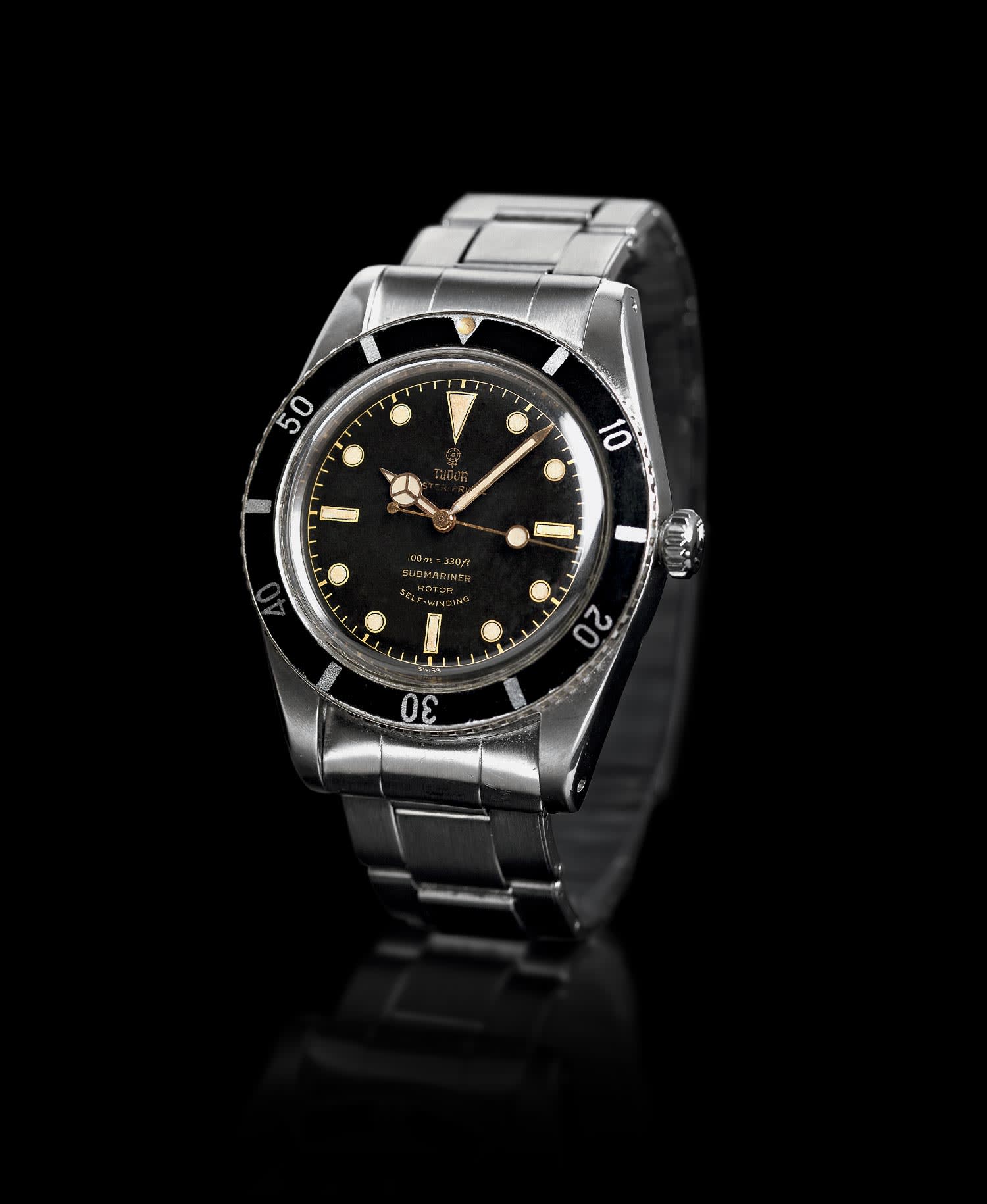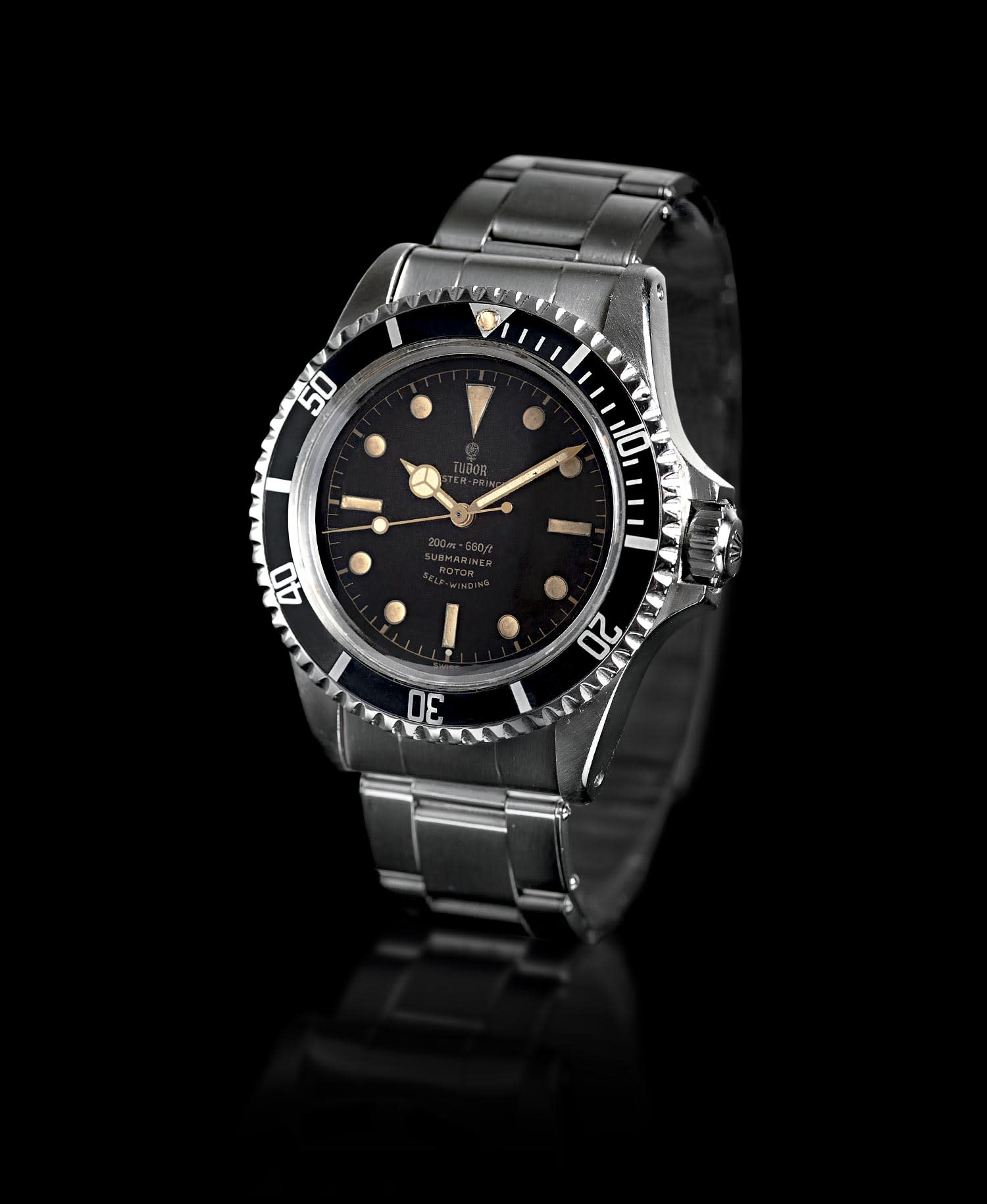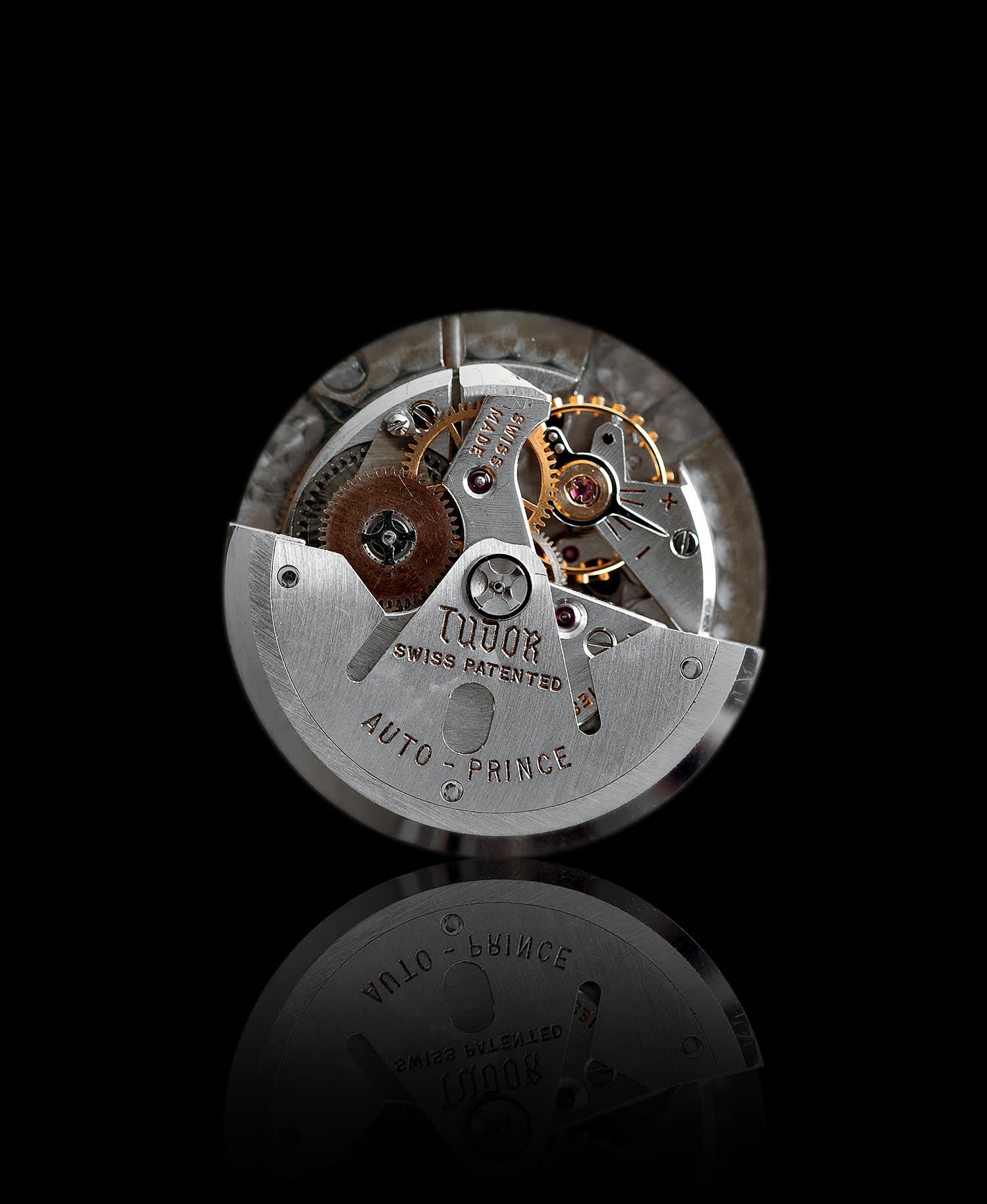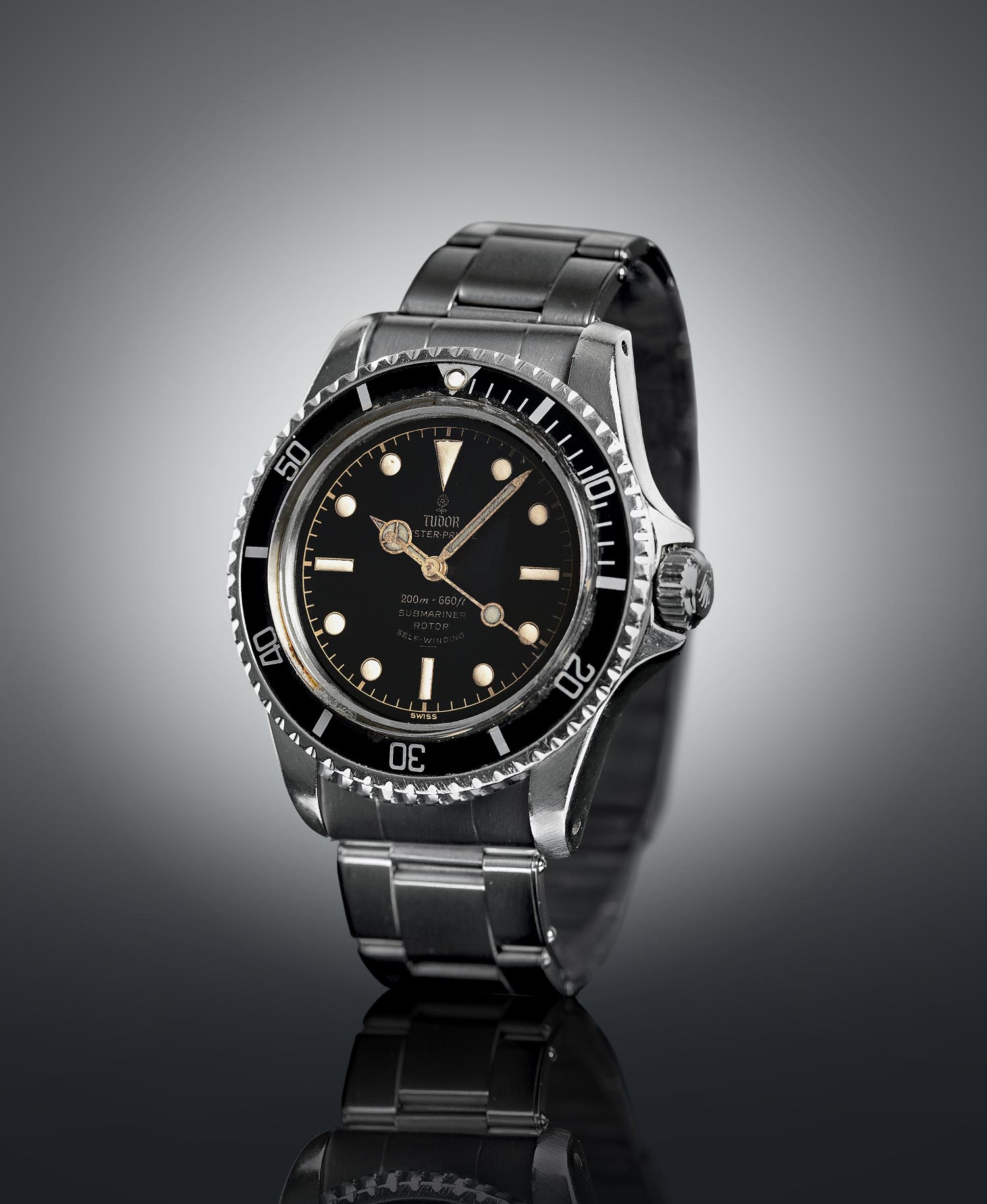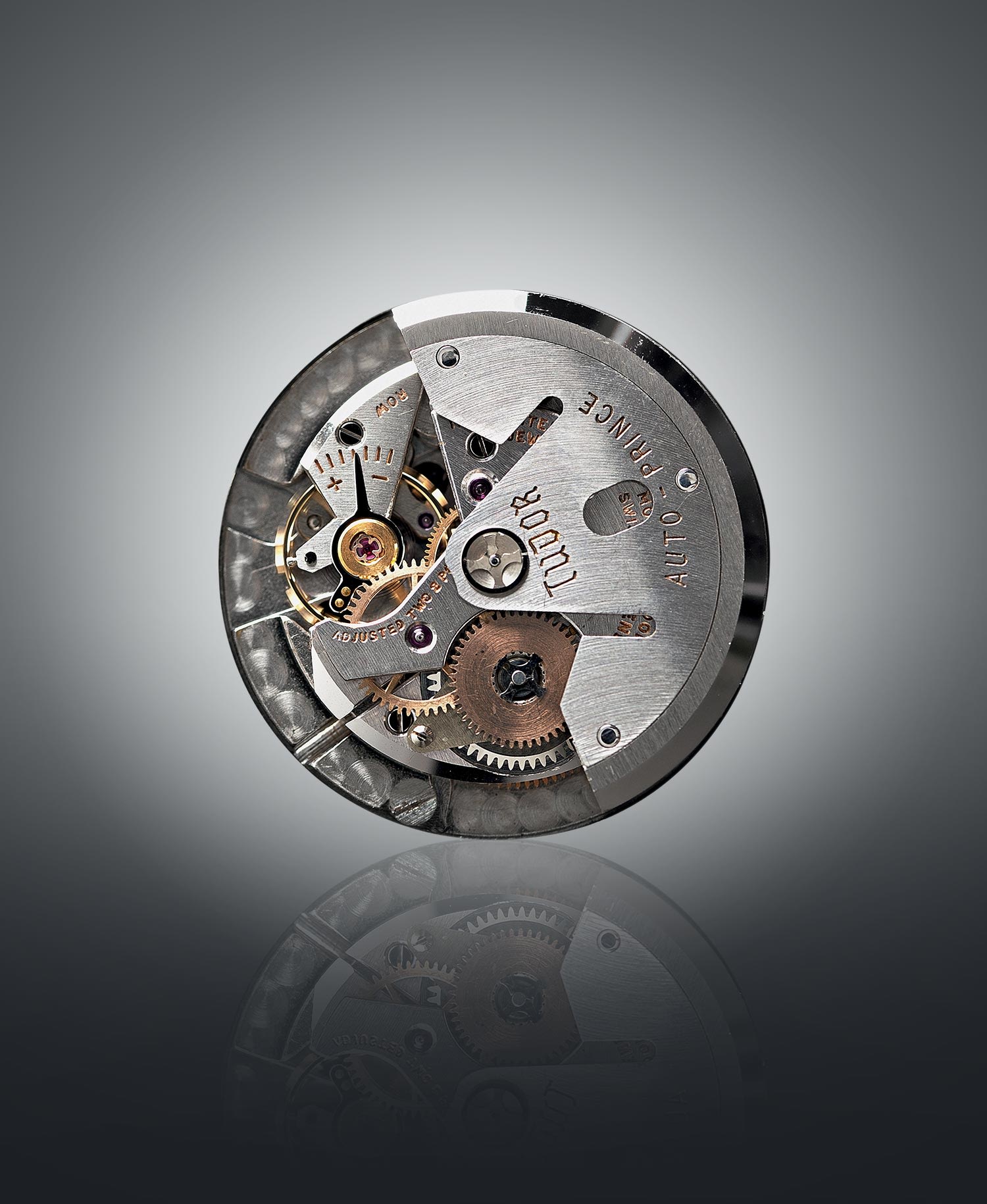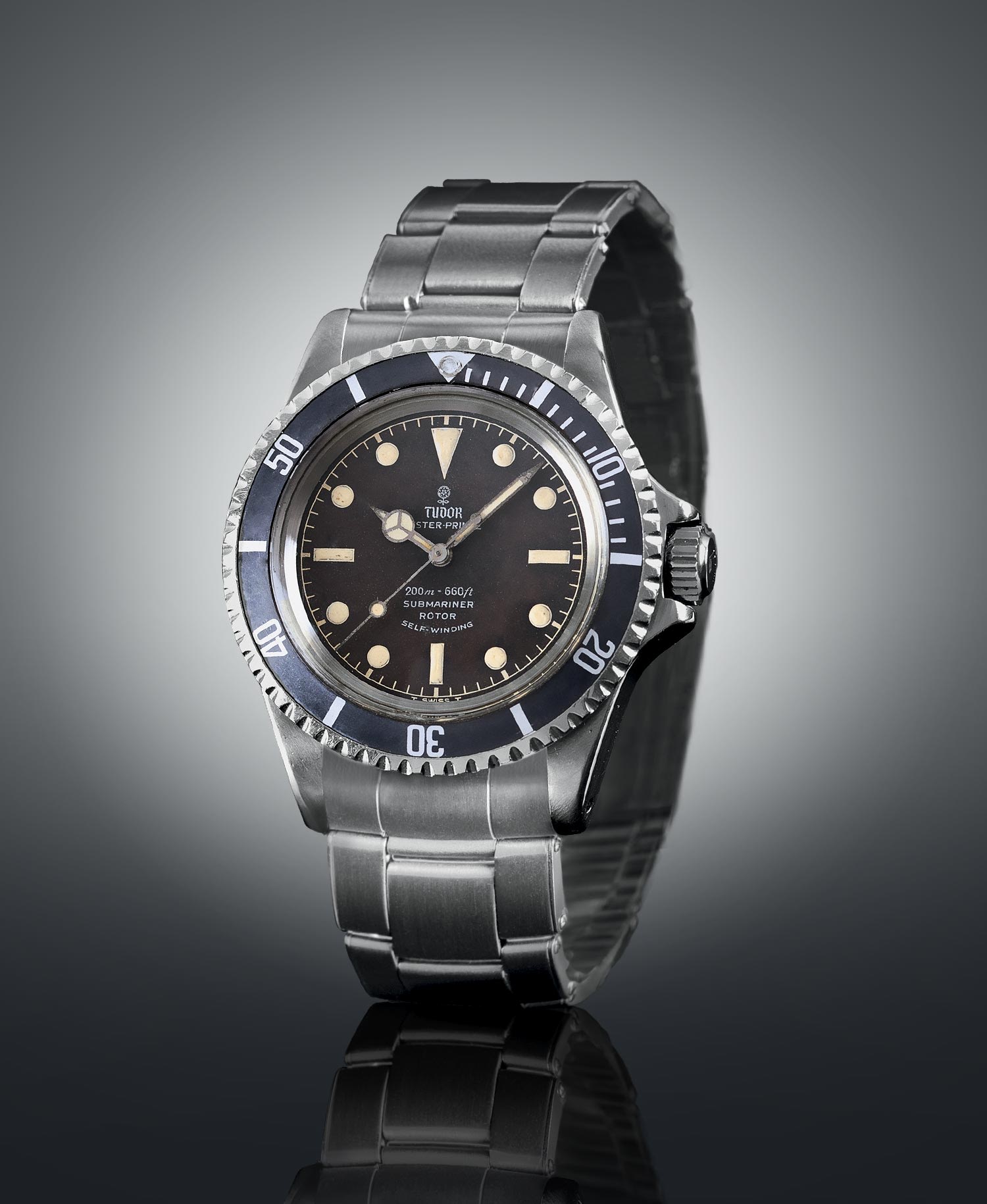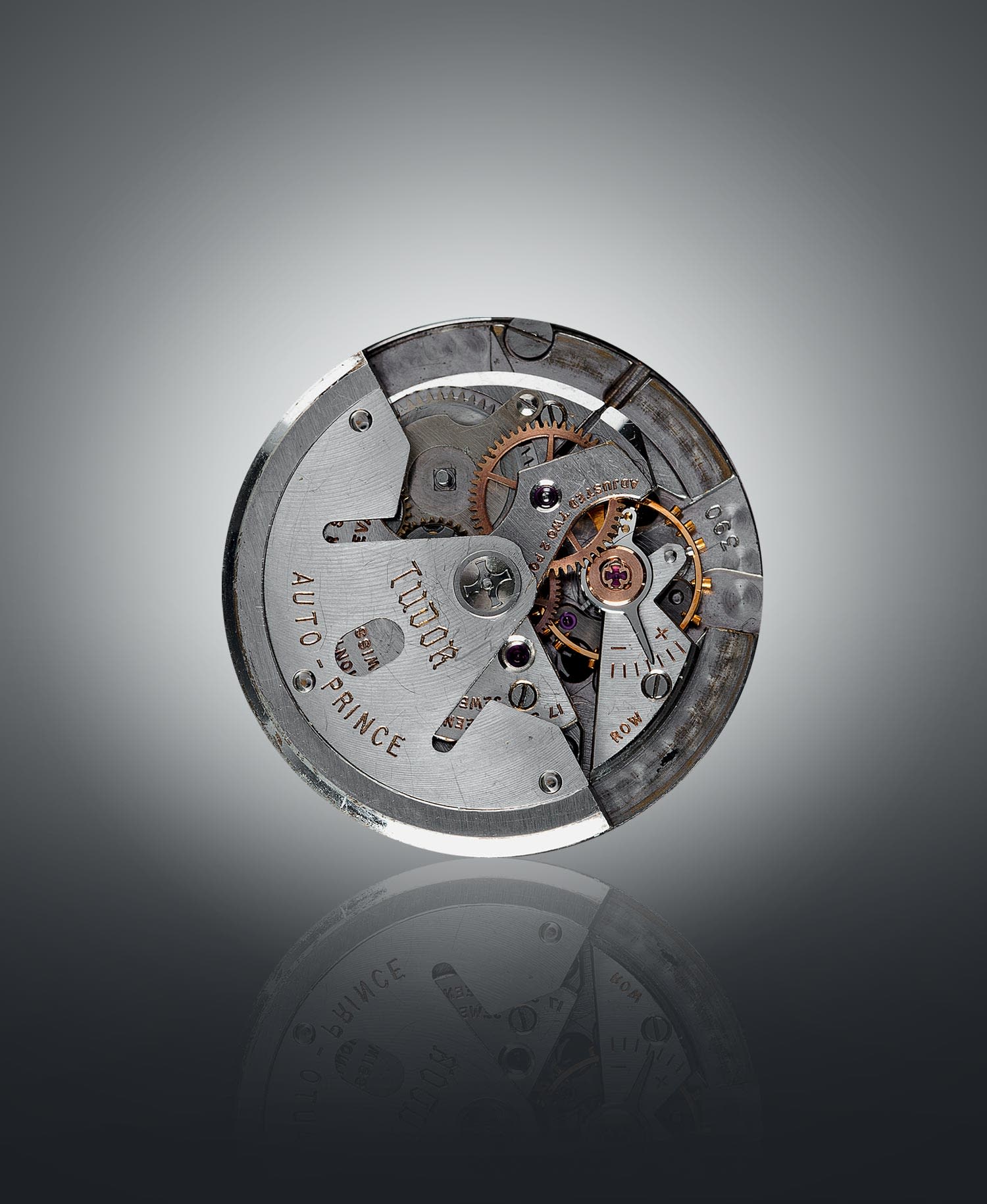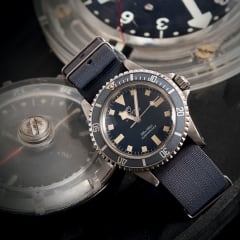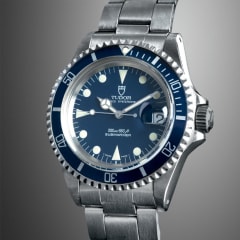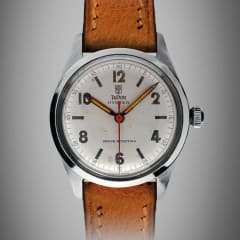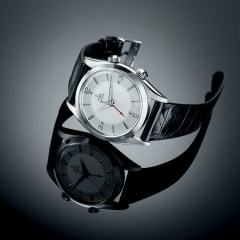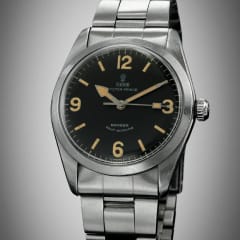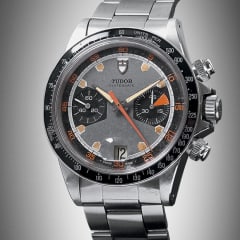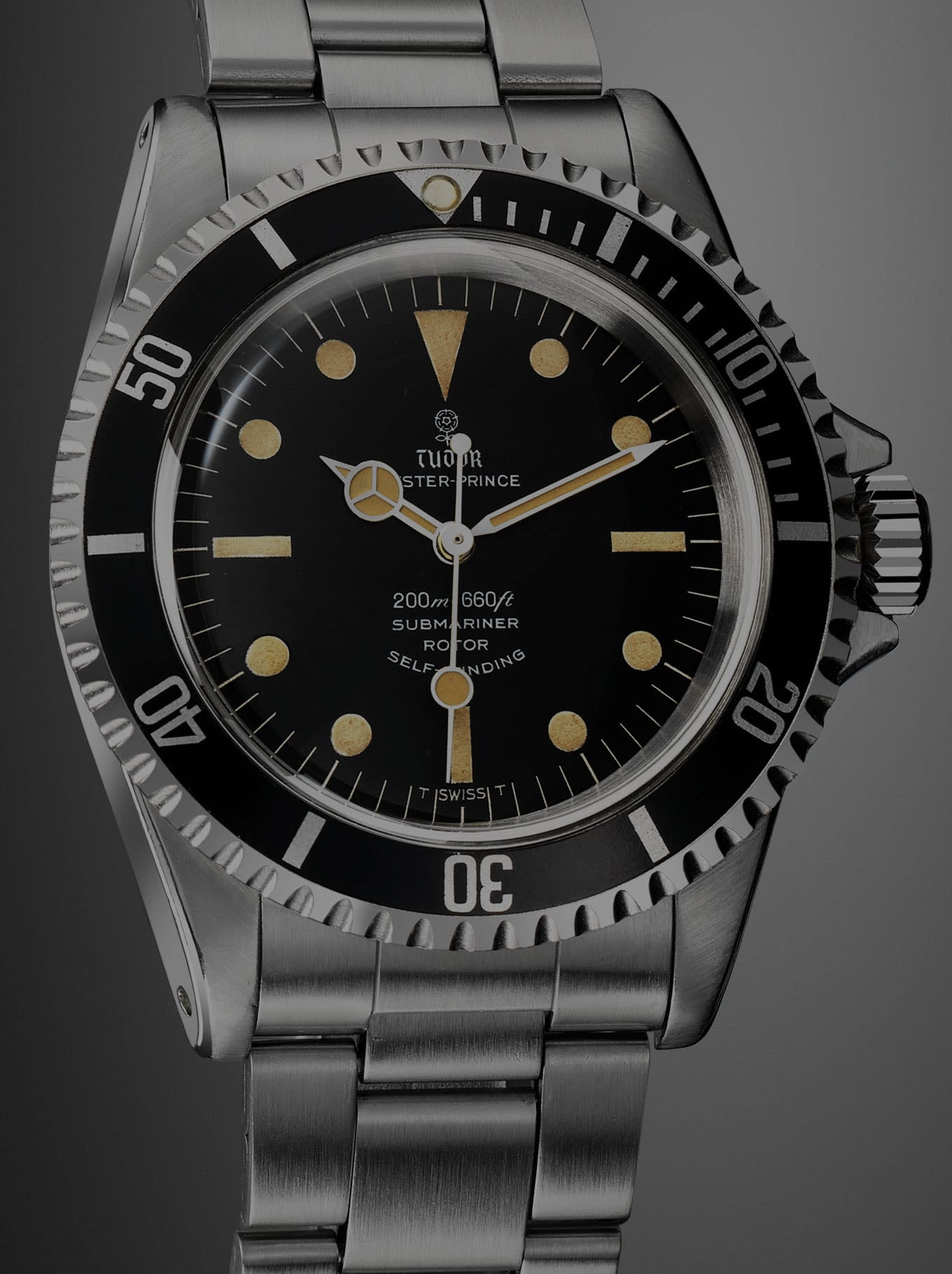
Divers' watches: From 1954 to 1968
In 1954, TUDOR set out on a new path which would contribute to forging its legend. It was in that year that the brand’s first divers’ watch, the TUDOR Oyster Prince Submariner reference 7922, saw the light of day. Designed from its origin to fulfil exceptional criteria of durability, reliability, precision and waterproofness at a moderate price, it quickly positioned itself as an instrument of choice for professionals. Over the next 45 years this original tool-watch continuously evolved to ever better meet the specific requirements of the many types of divers who were clients of the brand. The first generation of TUDOR Submariners saw numerous versions, and through them, a notable advance in terms of performance; for example, the maximum functional immersion depth, set at 100 metres initially, reached 200 metres with the introduction of reference 7924 in 1958.
During this period, multiple experiments were conducted to determine which characteristics were indispensable to the ideal divers’ watch. Each reference in the 7900 series thus featured subtle specificities which, whether or not they were retained in the development of the product, contributed to its legend. Finally, with the latest variation of reference 7928, recognisable by its round crown guards, it was in the first half of the 1960s that the general lines and technical specifications that constituted the TUDOR Submariner were established.
1954: TUDOR OYSTER PRINCE SUBMARINER 7922
The first TUDOR divers’ watch was presented in 1954. It bore the name TUDOR Oyster Prince Submariner, reference 7922. It was a self-winding watch unique in the brand’s collection. Its features corresponded to its function as a divers’ watch: a case with a screw-down back and a crown whose waterproofness was guaranteed to a depth of 100 metres, large hour markers and hands with luminous material for easy reading in deep water, as well as a bidirectional rotatable bezel graduated in 5-minute intervals to precisely measure dive time and allow for the adjustment of the decompression stages. Its black lacquered dial, subtly domed, was designed to optimise contrast with the indications it bears – the gilt inscriptions “OYSTER PRINCE” at noon under the brand logo, and “100 m = 330 ft”, “SUBMARINER”, “ROTOR”, “SELF-WINDING” on four lines at 6 o’clock. There is also a reminder of its guaranteed waterproofness at 6 o’clock, in metres and in feet. Its Tropic-type Plexiglas crystal was dome-shaped for better water pressure resistance. Its movement was the self-winding Calibre 390, developed on a Fleurier movement-blank with a frequency of 18,000 beats per hour. Finally, its 5 mm-diameter screw-down crown and its Oyster-type bracelet, reference 6636 with riveted links, were signed with the Rolex logo.
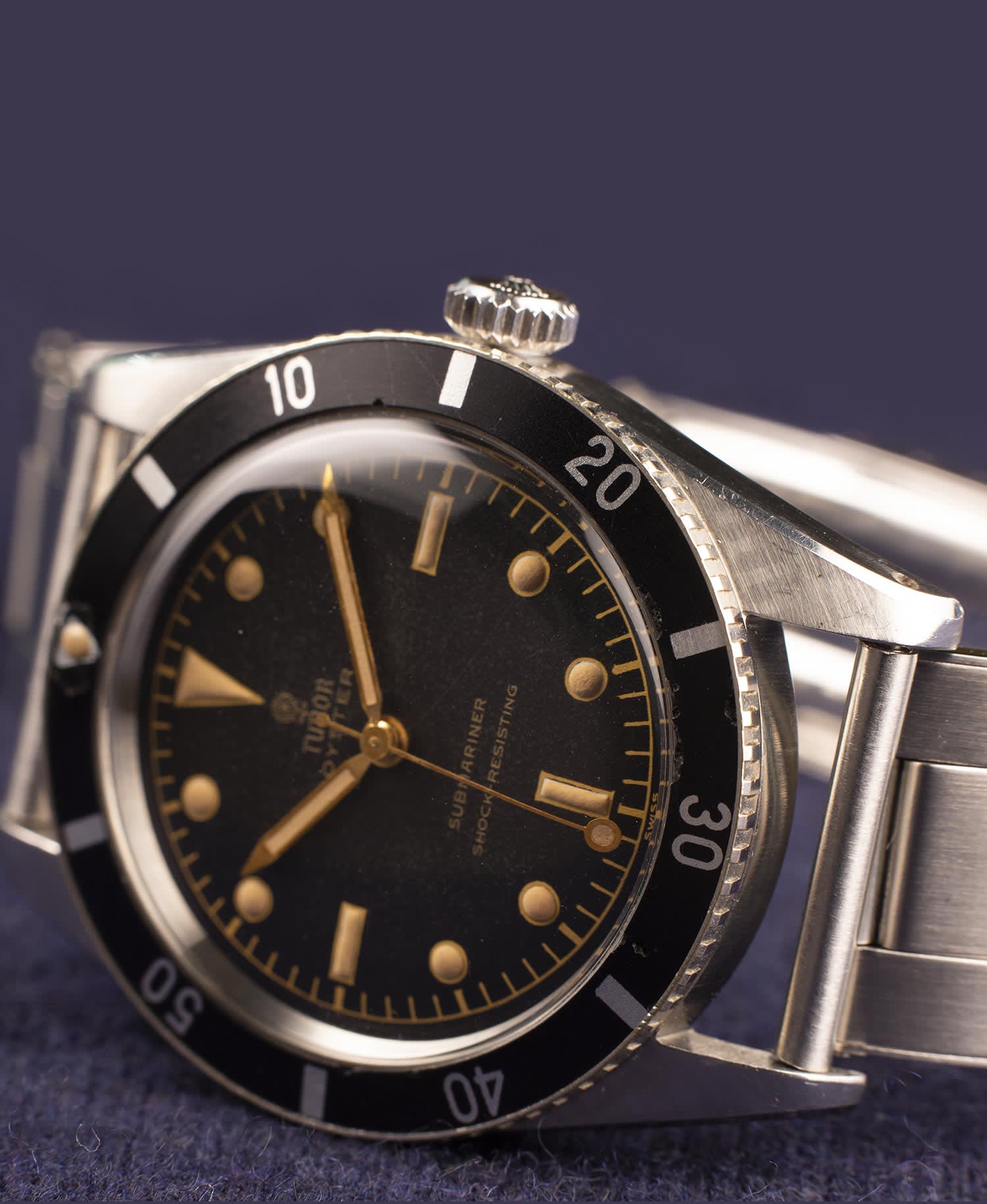
1955 TUDOR OYSTER SUBMARINER 7923
Reference 7923 was the only TUDOR Submariner to have been equipped with a manually-wound movement. This technical choice made it a particularly flat divers’ watch. Thanks to its screw-down case back and crown, characteristics proper to the Oyster case, as well as its domed crystal, the waterproofness of the TUDOR Oyster Submariner was ensured to a depth of 100 metres. Its black lacquered dial was no longer inscribed “ROTOR”, “SELF-WINDING” at 6 o’clock since the movement used was not self-winding. In place of these indications, the dial now bore the epithets “SUBMARINER”, “SHOCK-RESISTING”. A reminder of the waterproofness was not visible on the dial and the hands used were in baton style, different from those that equipped the first-generation Submariners. Reference 7923 was equipped with the manually-wound ETA Calibre 1182 with a frequency of 18,000 beats per hour. Its Oyster-type bracelet with riveted links, reference 6636, bore the Rolex logo. On the example shown here, two straight cylindrical bars replaced the more common curved end links holding the bracelet to the case.
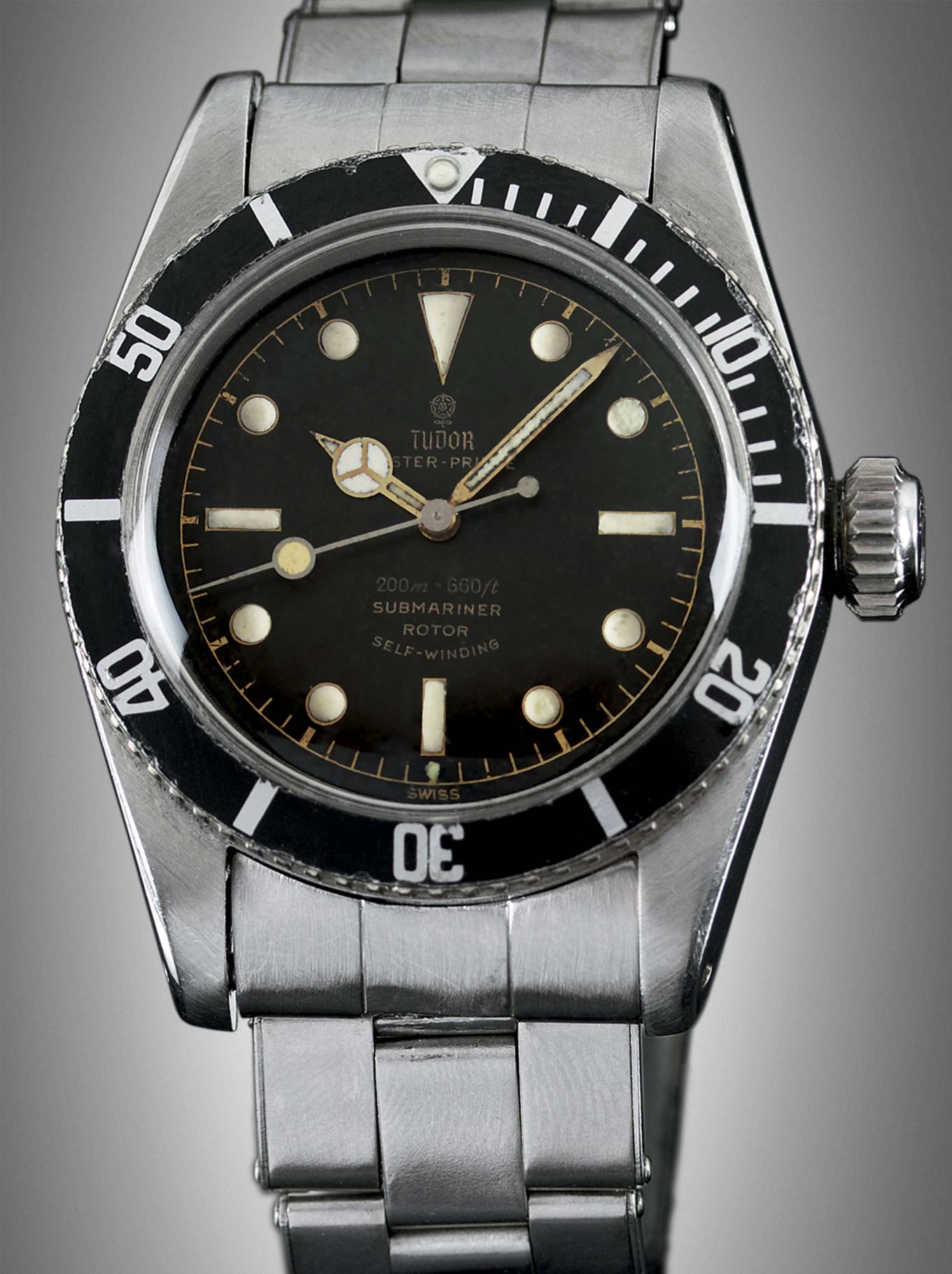
1958 TUDOR OYSTER PRINCE SUBMARINER “BIG CROWN” 7924
Renamed “Big Crown” by collectors, an allusion to its 8 mm winding crown, reference 7924 appeared in 1958. At first glance similar to its predecessors, it presented a fundamental innovation in that its waterproofness was from then on doubled to a maximum immersion depth of 200 metres. To reach this new threshold, the Submariner case, 37 mm in diameter, had been made thicker and was equipped with a larger screw-down crown. A new Tropic-type Plexiglas crystal, thicker and dome-shaped, was installed for better resistance to great pressure. With the same self-winding Calibre 390 as reference 7922 at its heart, this new Submariner bore at 6 o’clock on its black lacquered dial the inscription “200 m = 660 ft”, a reminder of its waterproofness guarantee. Its hands reverted to the characteristic Submariner design. Its Oyster-type bracelet with riveted links, reference 7206, bore the Rolex signature.
1959 TUDOR OYSTER PRINCE SUBMARINER “SQUARE CROWN GUARDS” 7928
In 1959, with the advent of reference 7928, TUDOR for the first time proposed the principle of guards to protect the winding crown from shocks. The variations in the execution of this protection were an illustration of the dynamic continuous evolution of the same reference, very characteristic of the first-generation TUDOR Submariners. Reference 7928, shown here and produced in 1959, presented the square version of these protections, called “Square Crown Guards” in collectors’ circles. With these new protections, the size of the crown used would now be 6 mm. The case measured 39 mm in diameter, was waterproof to a depth of 200 metres and bore the signature “ORIGINAL OYSTER CASE BY ROLEX GENEVA”. The design of its dial, hands and bezel was similar to that of references 7922, 7924 and 7925. Its movement was the self-winding Calibre 390, just as for all the TUDOR Oyster Prince Submariners in the 7900 series.
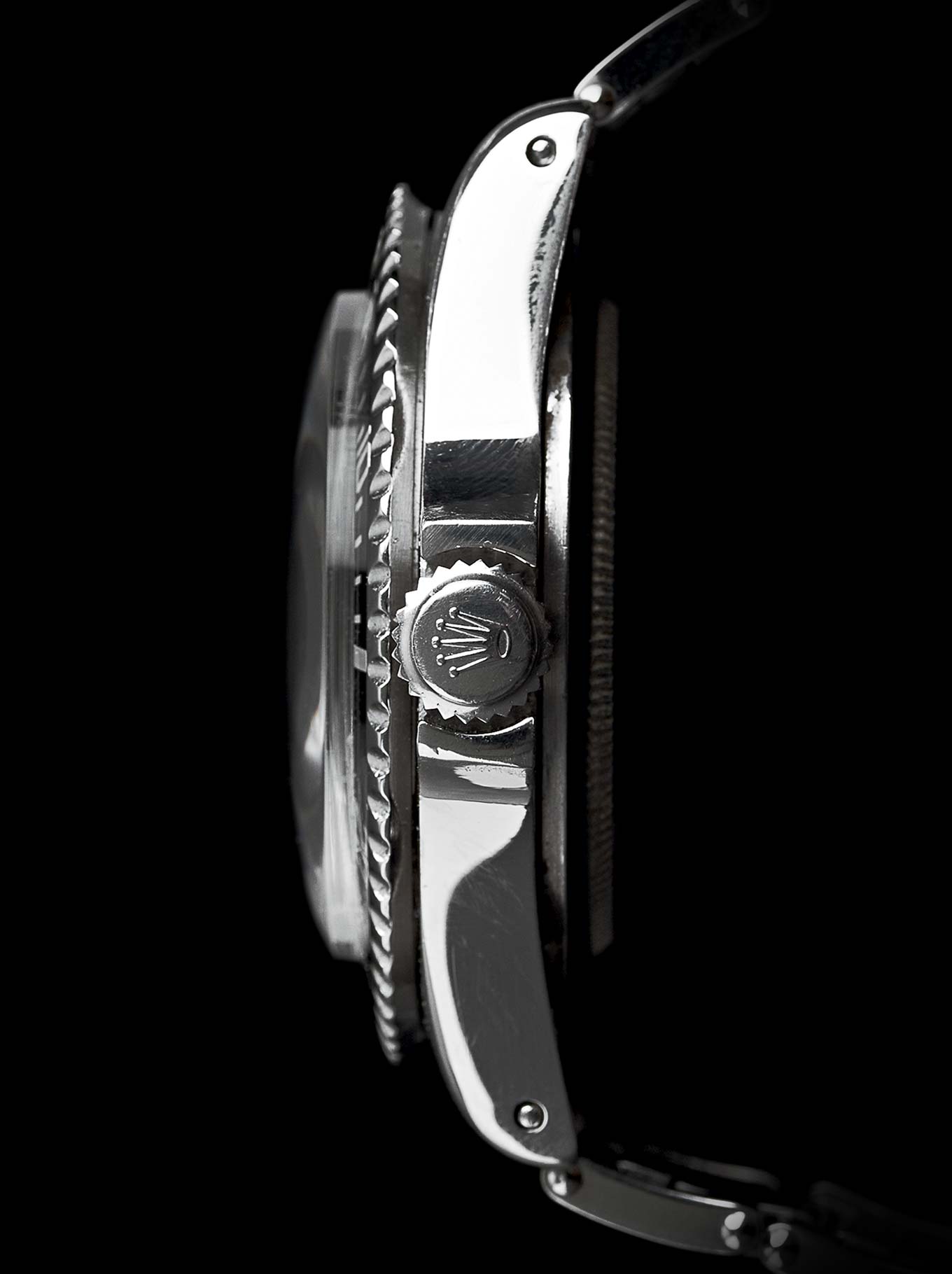
1960: TUDOR OYSTER PRINCE SUBMARINER “POINTED CROWN GUARDS” 7928
The evolution of reference 7928 was continuous, like the changes in the crown guards of its cases. The TUDOR Submariner case was seeking its ultimate line, passing from an initial version of square crown guards to new more pointed ones, with reference 7928, similar to the one produced in 1961, earning the nickname “Pointed Crown Guards” among collectors. It would find its ultimate line several years later, with a rounded shape that would not change until the last of the TUDOR Submariners. Waterproof to a depth of 200 metres, the 39 mm case of reference 7928 bore a Rolex signature, as did its crown and its Oyster-type bracelet. Its dial bore the gilt inscriptions “OYSTER PRINCE” at noon under the brand logo, and “200 m = 660 ft”, “SUBMARINER”, “ROTOR”, “SELF-WINDING” on four lines at 6 o’clock. Its bezel was bidirectional and graduated with a luminous insert placed at zero on the graduation. Finally, its movement was the self-winding Calibre 390.
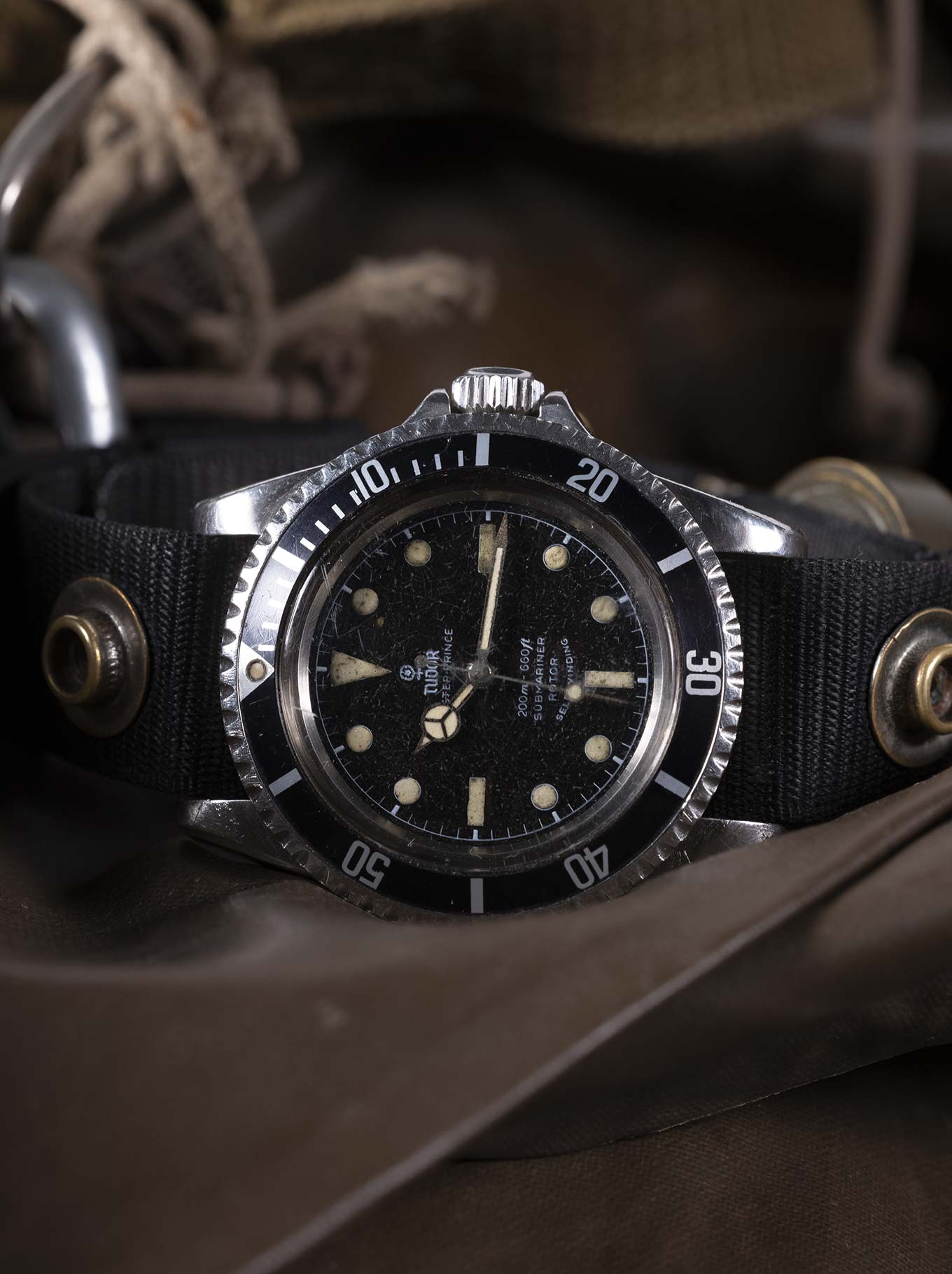
1964 TUDOR OYSTER PRINCE SUBMARINER “TROPICAL” 7928
The TUDOR Oyster Prince Submariner presented here and produced in 1964 featured two notable particularities. To begin with, its case had a new rounded version of crown guards. After the square or pointed shapes of the older versions of reference 7928, these new crown guards were progressively adopted by TUDOR Submariners. Ergonomic, they would not change in appearance until the end of the 1990s. The bezel and dial of this example subsequently underwent discolouration due to intense and prolonged exposure to UV rays. Collectors use the term “Tropical” to describe this type of change, which is greatly prized. The inscriptions on the dial of this example were silver-coloured. In accordance with the components specific to reference 7928, the case and screw-down crown of this model were signed Rolex. Its waterproofness was guaranteed to a depth of 200 metres and it was equipped with the self-winding 390 movement.
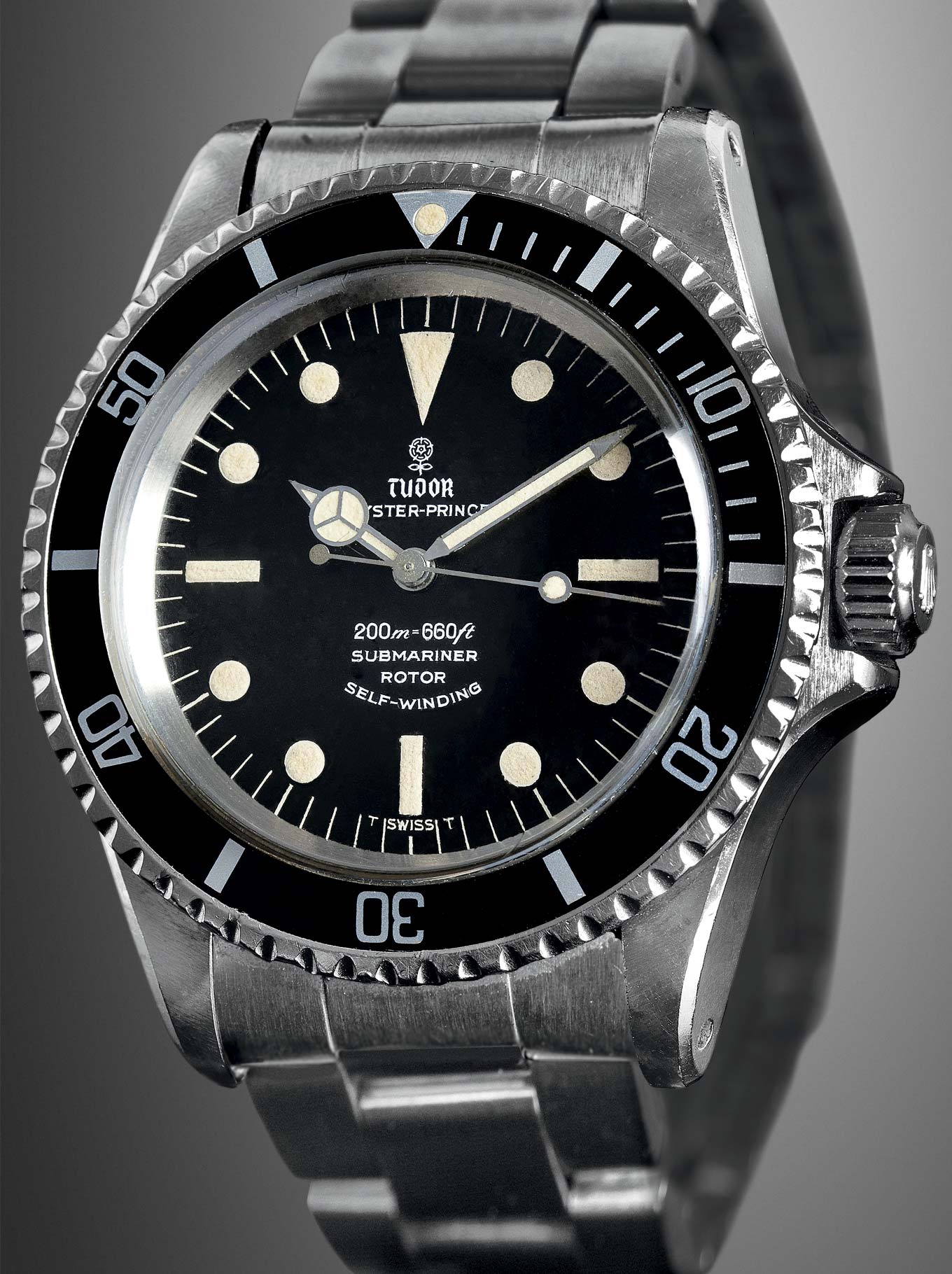
1967: tudor oyster submariner 7928
Produced in 1967, the example of the TUDOR Oyster Prince Submariner illustrated the subtle evolution of the reference 7928 dial during the 1960s. On earlier versions the minute graduations were imprinted within a circle; now each individual graduation extended to the flange, and the circle disappeared. The gilt, then silver-coloured, inscriptions used formerly were also progressively abandoned in favour of white ones, as demonstrated here. With its dial printed in white, its characteristic hands, its case with rounded crown guards signed Rolex, its domed Plexiglas crystal, its waterproofness guaranteed to a depth of 200 metres, its self-winding 390 movement and its Rolex Oyster-type bracelet, the reference 7928 presented here was the ultimate version of the first generation of the TUDOR Submariner. The result of thirteen years of research and experimentation in the field of divers’ watches, this model defined the foundation on which the next 30 years of the TUDOR Submariner would be built.


